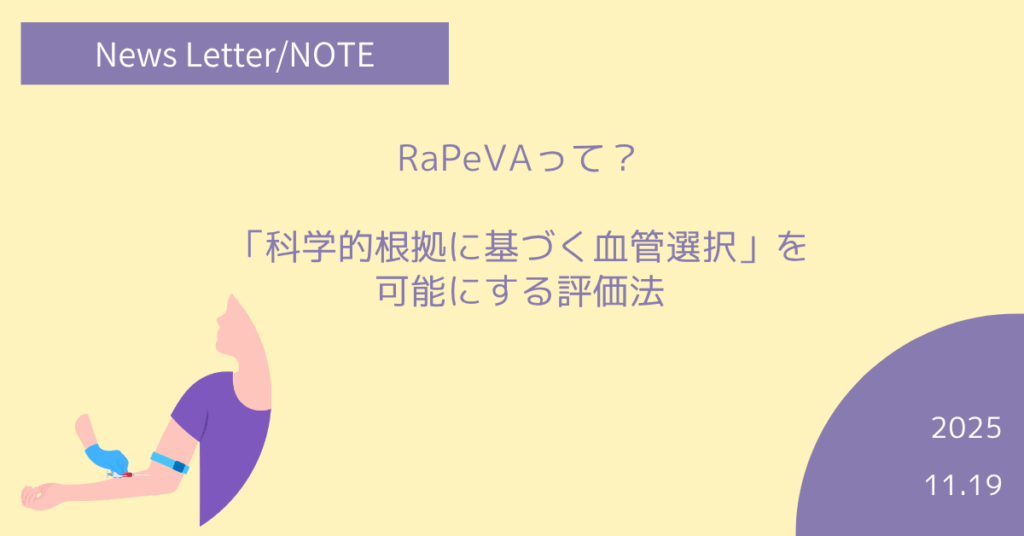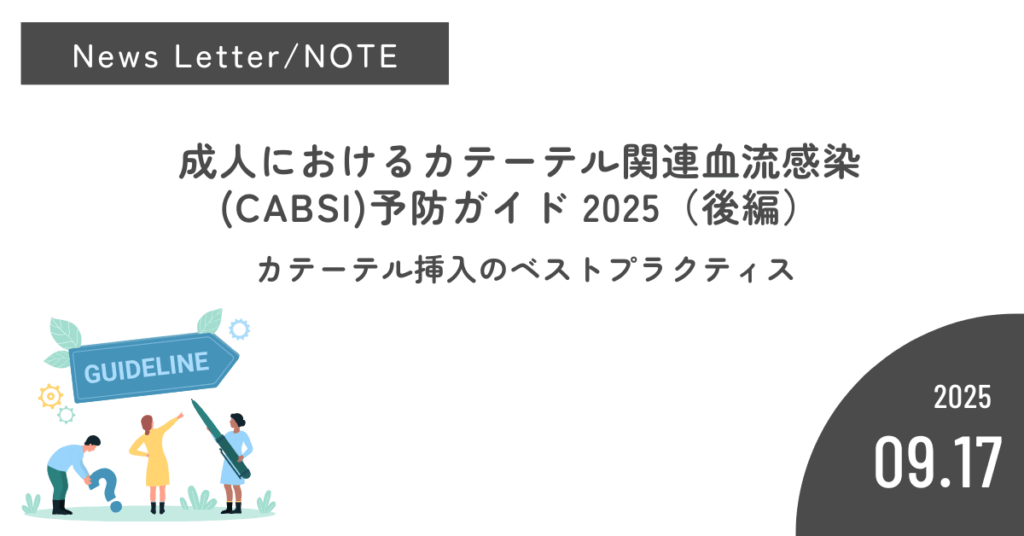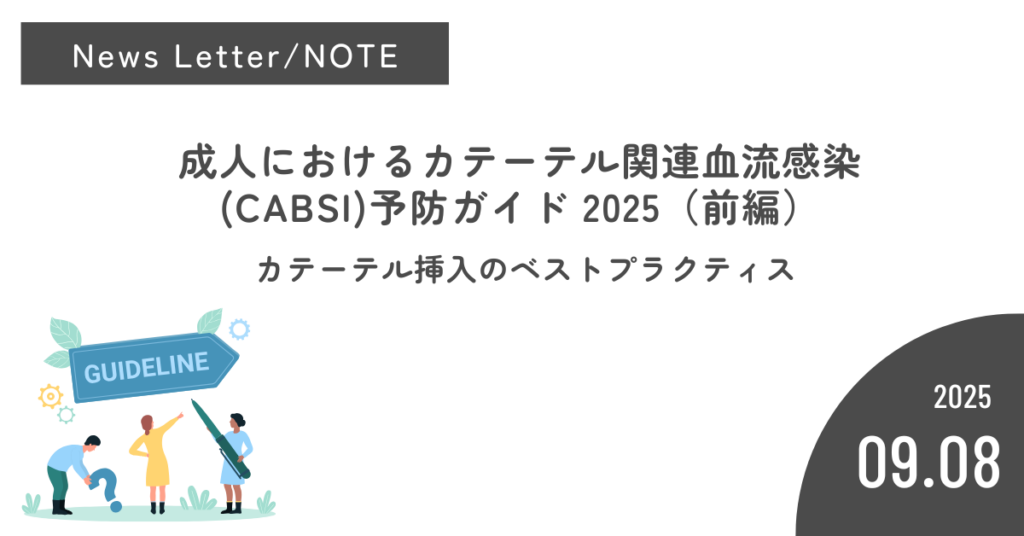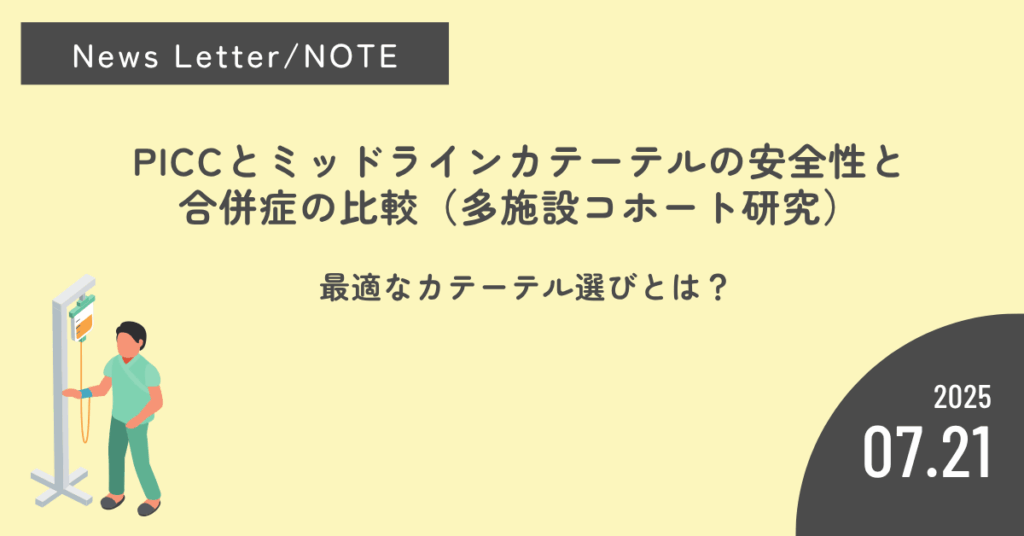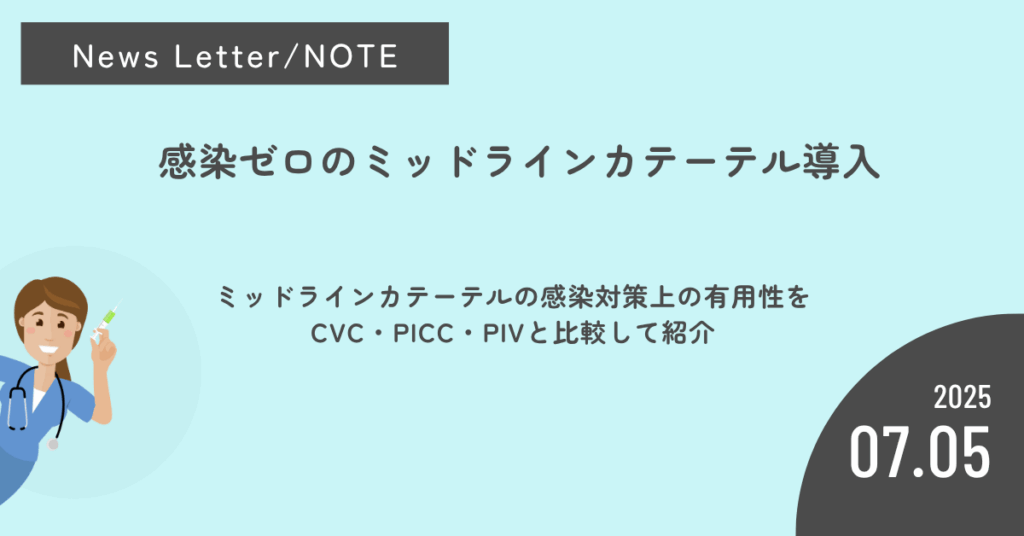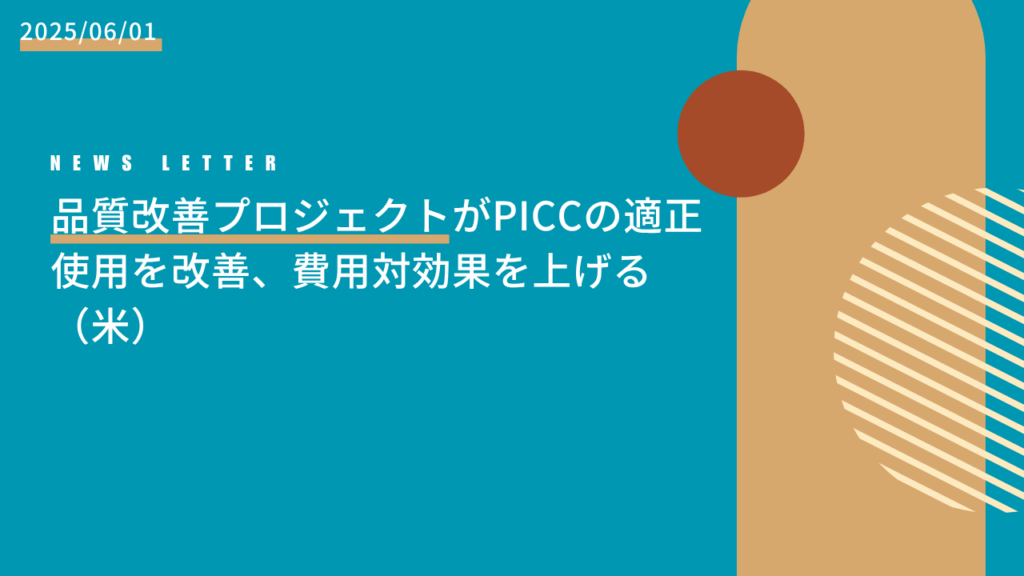blog/newsletter- category -
-

What is RaPeVA?
RaPeVA (Rapid Peripheral Vein Assessment) is a standard procedure for safely inserting a PICC (Peripherally Inserted Central Catheter). It involves systematically observing and evaluating the veins in both upper limbs using ultrasound to select the most suitable vessel and side (right or left). This helps prevent complications associated with PICC insertion, such as thrombosis, infection, and bleeding. -

Do you know the SIP protocol?
The SIP protocol is an evidence-based standardized procedure to systematically reduce complications that can occur during PICC insertion, including thrombosis, infection, dislodgement, malpositioning, and nerve damage. 2014 version based on ultrasound evaluation (RaPeVA), exit zoning (ZIM), tip position by IC-ECG Confirmation... -

Changes brought about by ICU admission criteria (severity of illness, medical and nursing care needs)
In April 2014, the Ministry of Health, Labor and Welfare introduced the "ICU admission criteria (severity of illness and medical/nursing necessity). These criteria limit patients who can be admitted to the ICU to those who "require a certain level of monitoring and treatment," and the system is designed to calculate reimbursement according to the implementation of such monitoring and treatment. This allows ICU... -

What is the Risk of CV Port Infection? From a Japanese retrospective analysis
The CV port (subcutaneous implantable central venous access port) is the central venous catheter of choice when prolonged chemotherapy is required or when high-calorie infusions must be administered at home. By removing the needle, the special design of the entry site... -

Catheter-Associated Bloodstream Infection (CABSI) Prevention Guide 2025 in Adults (Part 2)
We continue to introduce the "Guide to Prevention of Catheter-Associated Bloodstream Infection (CABSI) in Adults" published by the Association for Professionals in Infection Control and Epidemiology (APIC) in the United States in 2025. In this second part, we introduce best practices for catheter management... -

Catheter-Associated Bloodstream Infection (CABSI) Prevention Guide 2025 in Adults (Part I)
In this issue, we will introduce the "Guide to Prevention of Catheter-Associated Bloodstream Infection (CABSI) in Adults" published by the Association for Professionals in Infection Control and Epidemiology (APIC) in the United States in 2025. This is a long article and will be divided into two parts. In this first part, we will discuss catheter... -

Comparison by arterial line material Randomized controlled trial
This time it is a double-blind, randomized study of whether the incidence of catheter failure differs depending on the material of the arterial line. This is a double-blind randomized trial to determine whether the incidence of catheter failure differs depending on the material of the arterial line. The study ended early with a strong difference. Blood pressure monitoring with arterial catheters is an essential technique for hemodynamic assessment of critically ill patients in the ICU.... -

Comparison of Safety and Complications of PICC and Midline Catheters (Multicenter Cohort Study)
Midline catheter is a relatively new treatment method introduced in Japan in 2024. (It is inserted through a vein in the upper arm under echocardiography for patients who have difficulty securing an intravenous infusion and is said to be easier than PICC. -

Midline catheter introduction with zero infection
A study to reduce unnecessary use of central venous catheters and safely introduce midline catheters in venous channeling device selection: a prospective, nurse-led, observational study at a 576-bed urban community hospital that evaluated their usefulness in terms of infection risk and treatment completion rates.... -

Quality Improvement Project Improves Proper Use of PICC, Cost-Effectiveness (US)
While PICCs are widely used, the risk of inappropriate use and complications has been an issue. We present an article that evaluates the cost-effectiveness of a physician-led, pay-for-performance QI intervention by the Hospital Medicine Safety Consortium (HMS) in Michigan that increased the appropriate use of PICCs....

